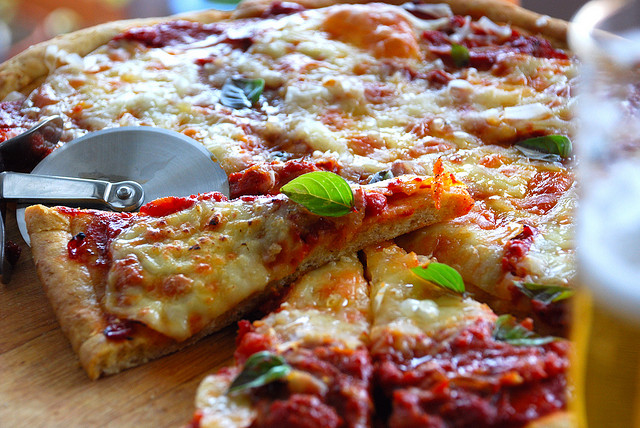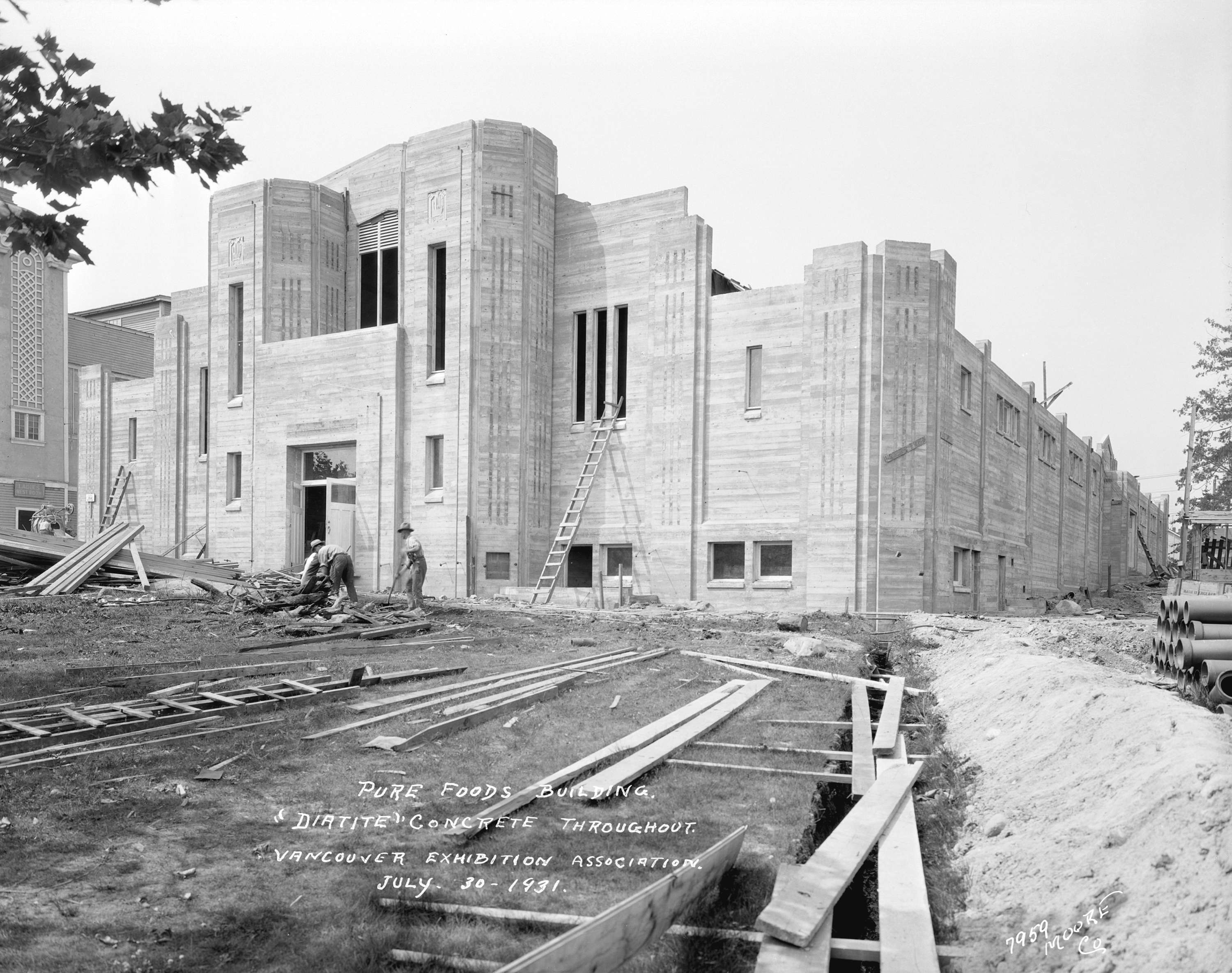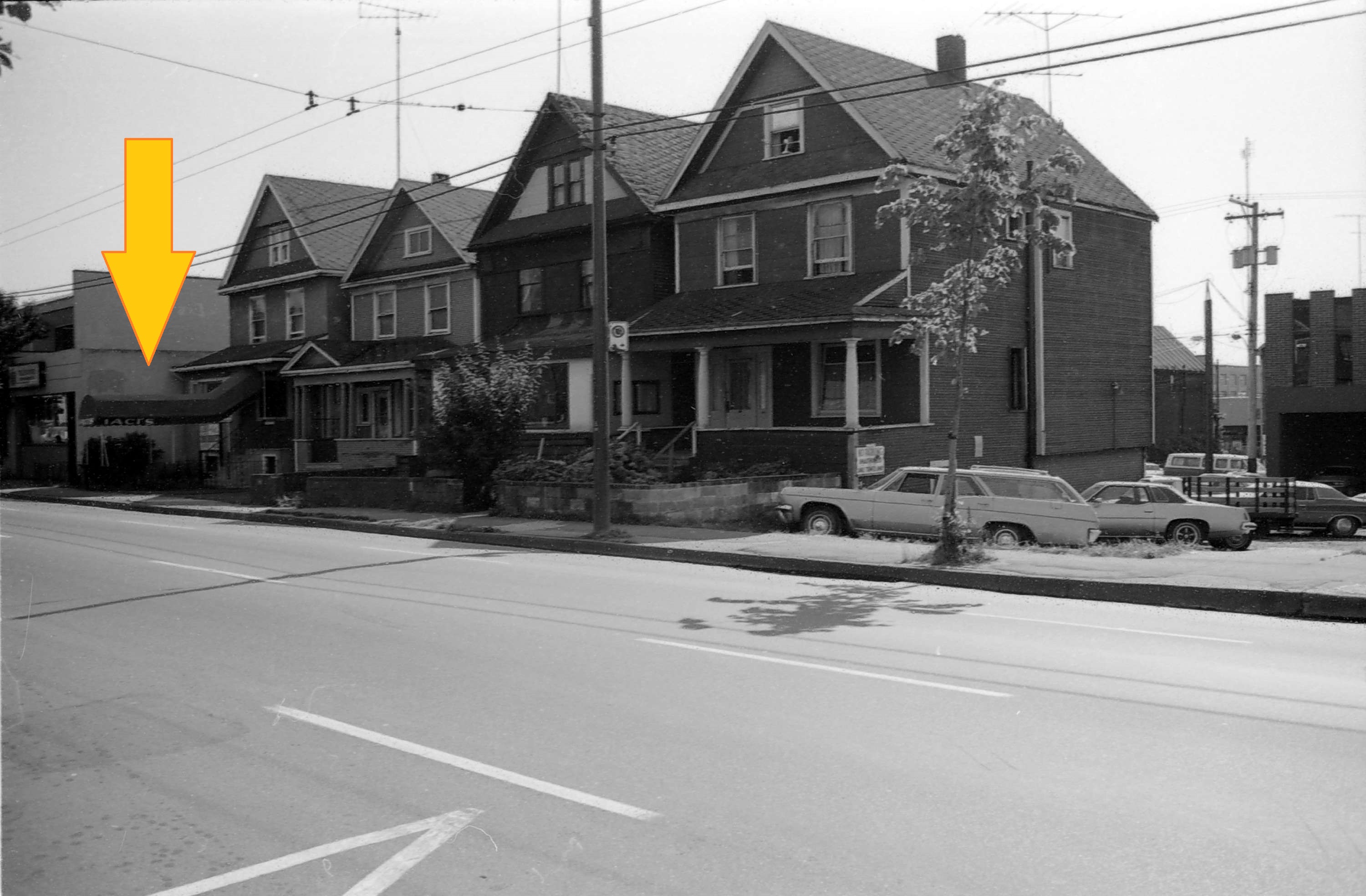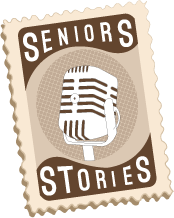Restaurateur Tevie Smith Introduced Pizza to Canada
Noted Vancouver restaurateur Tevie Smith (b. 1933) talks about bringing pizza to Canada in 1957, and shares his secret pizza topping technique.

Image credit: Gio, CC, Flickr
When I was 13, in 1946, I went out to the PNE and got a job with Nat Bailey, who ran the largest concession there. A lot of kids got work at the exhibition, and that was my start in the restaurant business. I could have been a hoodlum like my friends on the Vancouver Stock Exchange; that was a great way to make money. It was practically uncontrolled then, and the VSE was famous in North America, so if you wanted to run a scam you did it on Howe Street. Instead, I brought pizza to Canada.
In 1953, I took a bus from Vancouver to San Francisco with everything I owned in 7 suitcases, and I rode for 32 hours so I could learn about the restaurant business at a college there. I had to work my way through college, unlike kids today who get student loans and never pay them back. One of the jobs I got was in a pizza parlour where you broke the peppers and the onions into little bits and threw the dough–it was an art!
So then I came back to Vancouver, and being in the business, I went to all the restaurant conventions. I went to this one in Seattle, and I saw these guys making pizza. They had the crust, the sauce and the cheese like how you make a sandwich–bread, meat, mayo. And I thought “That’s not the way you make pizza!” Next thing you know, I’m walking down the aisle eating this slice, and it was good, really good. So I went back to them and asked if they had a distributor for their product in Canada; they didn’t even know where Canada was. Their name was Genovese, and if ever there were any mafia types it was these three gentlemen. They had outlets in Seattle, San Francisco, LA and New York, and had a company named Baker’s Pride Ovens. They provided the dough, sauce and ovens, and I brought the first pizza oven to Canada in 1957; I know that because I had to get that electric oven Canadian Standards approved.
I had a trailer of supplies waiting for these ovens to be approved, so I set up two stands at the PNE: one in the Pure Foods Building where I gave out samples, and one between the Coliseum and roller coaster where I sold pizza (they called it pissa) at 19 cents per slice. And the kids would take a bite and then throw it at me; they didn’t want to eat that shit! They didn’t know.

Image credit: M. James Skitt Matthews, public domain
Then we sold pizza at a night club called The Cellar that was downstairs in a building on Kingsway and Broadway. A group of jazz musicians had started the club and it had became unbelievably successful; there was no other place like it. The musicians hated this success. They wanted to keep it a nice little place where they could get together and jam. So they shut it down.
I was looking for investors for my restaurant, so I carried an oven on my back with a bag of cheese, a tin of sauce and some crusts, and I’d make pizza for people where they were. And they loved it! I made pizza on the floor of the VSE. I made pizza—fresh, hot pizza— for Nat Bailey and Clancy Sorenson from the White Lunches and for about a dozen other businessmen in a board room downtown and they loved it! Then I took my oven and sauces, went out the door, closed it behind me, and I could hear the businessmen inside laughing: “Pizza?! Who’s going to buy that?”
Well, I got my investors on a handshake deal, and we opened the first pizzeria in Canada at 15th and Granville. It was called The Snackery (we eventually had three of them). This was when television was starting up and killing restaurants and movie theatres. But we had people lined up out the door. It was the first really different restaurant in the city. It wasn’t a true pizzeria though, because we knew we had to serve other foods as well. I specialized in corned beef sandwiches and I’d make 2 tons of corned beef a month and 6 tons of pickles every summer. And I made cheesecakes and apple kuchen–no one had ever seen food like that! We were busy. We were lined up every night when other restaurants were dying.
TEVIE’S SECRET
My secret? Today everyone uses mozzarella cheese; I used mozzarella, provolone, and romano in little bits and then added basil, oregano and garlic to my cheese, so, when you bit into it, you’d get a bite. The pepperoni they use today is coloured fat, it’s garbage. I got those little pepperettes and I’d grind them up, you know, the ones with the pinched ends that come from drying over wooden rods? They looked like dog food, but the taste was incredible, and you could sprinkle it evenly over the crust. It cooked better and wouldn’t slide off the pizza. I’d get my crusts, sauce and cheese from Seattle, and wholesale it here. It’s stupid to make your own dough; you need a big room just for that, but now everyone’s pretty well making their own.
Jack Wasserman introduced me to Mamma Iaci who made the most unbelievable food in town. She and her family owned Casa Capri and it was in a house right across the street from The Penthouse on Seymour St. You went upstairs and sat in the living room and the family ran it. Everyone who was anyone went there. Frank Sinatra would go there anytime he was in town. If you were lucky you’d be invited to eat downstairs in the kitchen. “Who’s this Jewish kid making pizza on South Granville?” she said to me. Her specialties were pizza bread and chicken cacciatore, and she made the most incredible cheesecake you’ve ever eaten— baked in a pan of water in the oven and then sour cream on top. Real unbelievable cheesecake! Her son, Ken Iaci, later became the chef and a partner at Joe Fortes.

Image credit: Vancouver Planning Department, copyright City of Vancouver




Leave a Reply